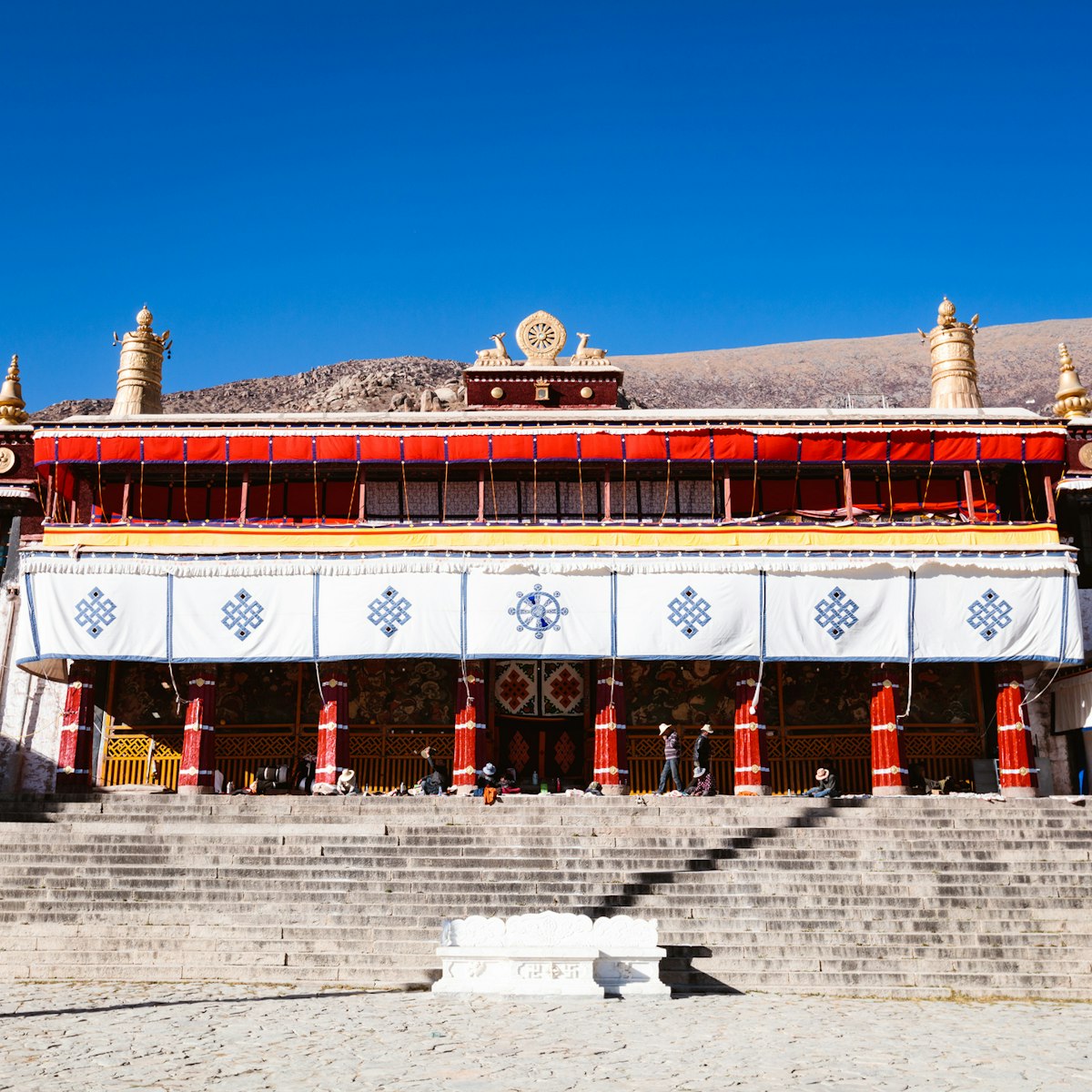For your first visit to the Barkhor, enter from Barkhor Sq, a large plaza that was cleared in 1985. The square has been a focus for violent political protest on several occasions, notably in 1998 (when a Dutch tourist was shot in the shoulder) and most recently in 2008. The square is now bordered by metal detectors, riot-squad vehicles, fire-extinguisher teams (to prevent self-immolations) and rooftop surveillance. Despite the stream of selfie-taking tourists, the atmosphere is one of occupation or siege.
Close to the entrance to the Jokhang a constant stream of Tibetans follows the Barkhor circumambulation route in a clockwise direction. Look for the two pot-bellied stone sangkang (incense burners) in front of the Jokhang. There are four sangkang, marking the four extremities of the Barkhor Circuit; the other two are at the rear of the Jokhang.
Behind the first two sangkang are two open enclosures. The northern stele atop a turtle is inscribed with the terms of the Sino-Tibetan treaty of 822. The dual-language inscription delimits the Chinese–Tibetan border and guarantees mutual respect of the borders of the two nations, an irony given the political situation over the last 60 years. The southern enclosure harbours an ancient willow tree, known as the hair of the Jowo – according to legend, it was planted by Songtsen Gampo’s Chinese wife, Princess Wencheng – and two stele, one of which was erected in 1793 to commemorate the victims of a smallpox epidemic. Over the centuries Tibetans have chiselled out chunks of this stele for its purported protective medicinal properties.



